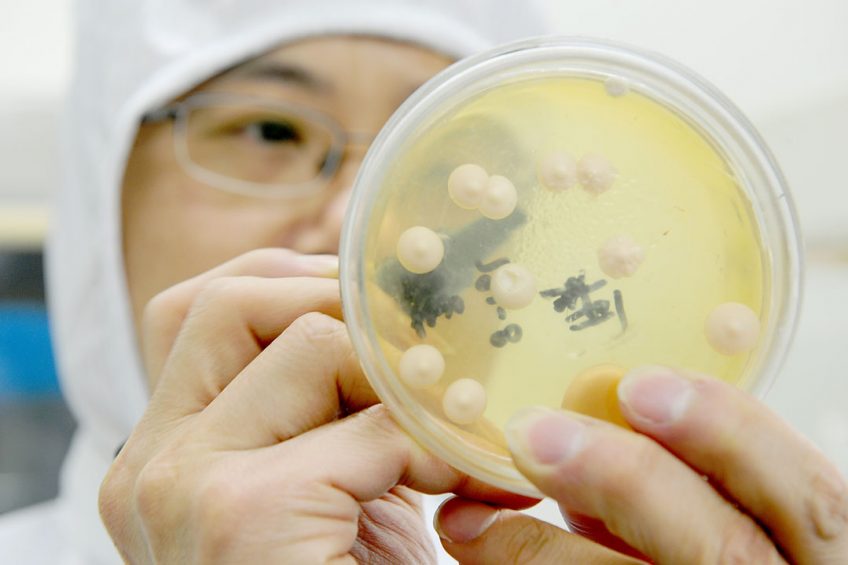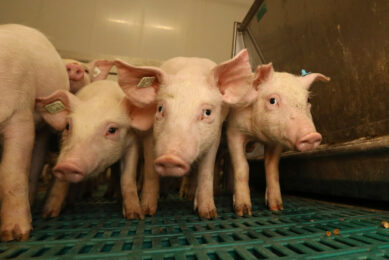Effects of yeast on intestinal health

With increasing bans on the use of antibiotics and zinc oxide, how can we ensure intestinal health without high doses of these substances? Yeast and its deep processed products are fine alternatives.
Reducing the amount of antibiotics or the dosage of zinc oxide has an effect on an animal’s intestinal health. High doses of zinc oxide can reduce the rate of diarrhoea, but zinc oxide discharged from the body will seriously affect land and food safety. Antibiotics, as growth promoters, are also used to reduce diarrhoea and promote growth, but long-term large-scale use is causing drug residues and food safety problems. Therefore, maintaining intestinal health is crucial to growth and development.
- First of all, the gut is the most important digestive organ in the animal digestive system. 100% of the nutrients are absorbed through the intestines, so there is no nutrient absorption without a good intestinal tract.
- Second, the gut is the body’s largest immune organ. Nearly 80% of the immune cells in the body are found in the intestinal wall, and the 60-70% lymph nodes throughout the body are distributed in the intestine.
- Third, the gut has the largest micro-ecosystem. The intestine (colon) is colonised with a large number of bacteria. The total weight of bacteria living in the intestine is 1-3 kg. There are about 1 trillion live bacteria per gram of intestinal contents.
- Fourth, the gut is also the most vulnerable organ. Antibiotics, stress, toxins and infections are common factors that destroy intestinal health. An antibiotic is enough to destroy the gut’s normal flora for up to a year and lead to antibiotic resistance.
Establishing a healthy intestine
The main contents of animal intestinal health include the following 3 aspects:
- Intestinal structural integrity: Products that stimulate digestion and protect intestinal mucosal barrier are needed to ensure the integrity of intestinal structure. For example, butyric acid, gluconic acid, lactic acid, glutamine, threonine, cysteine, nucleotides, small peptides, etc.
- Relatively stable microbial ecosystem: On the one hand, it is necessary to reduce the number of intestinal pathogens. For example, inorganic acids, organic acids, zinc oxide, essential oils, Chinese herbs, probiotics, phages, antimicrobial peptides and so on. On the other hand, it is necessary to stimulate the establishment of beneficial bacteria in the intestine, such as probiotics, prebiotics, etc.
- Relatively stable immunomodulatory system: Enhance immune response, such as immunoglobulin, n-3PUFA, yeast cell wall polysaccharides and so on.
The above 3 intestinal health contents have a certain relationship with yeast products, so what is the role of yeast products on animal intestinal health? YeaSense is a kind of yeast essence with bacteriostatic activity, which is obtained from yeast cells after directed enzymolysis. YeaSense can inhibit the outbreak of intestinal pathogenic bacteria and alleviate the complications of bacterial diseases. It is a new natural alternative for non-antibiotic diets.
Stabilising intestinal microflora with yeast
In collaboration with Huazhong Agricultural University, Angel Yeast has tested 101 clinical isolates and standard strains. YeaSense can inhibit more than 90% of pathogenic bacteria, see Figure 1. Live yeast can stabilise intestinal microflora, promote feed digestion and reduce diarrhoea rates, see Figure 2. In improving intestinal structure and function, living yeast promotes intestinal cell maturation mainly through polyamines. In the optimisation of intestinal microflora, on the one hand to provide B vitamins, promote intestinal peristalsis, on the other hand, through competitive oxygen consumption to inhibit the reproduction of pathogens.
GroPro is rich in nucleotides, which can provide exogenous nucleotides for intestinal development and help maintain intestinal integrity. Increasing the villus height and mucosal thickness of the intestine can enlarge the absorption area of the small intestine and facilitate the absorption of nutrients. The depth of the intestinal recess can reflect the rate of cell formation. The shallowing of the crypt indicates that the maturation rate of cells increases, and the secretion function of the crypt increases correspondingly, which affects the digestion and absorption function.
The intestinal V/C value (villus height/crypt depth) usually reflects the degree of renewal and metabolism of intestinal epithelial cells and intestinal functional status. A decrease in the ratio indicates a decrease in digestive and absorptive function, often accompanied by diarrhoea; an increase in the ratio indicates an increase in digestive and absorptive function, accompanied by a decrease in the rate of diarrhoea.
Mannan and beta glucan in yeast cell wall are prebiotics, which can optimise intestinal flora. Results have shown that the amount of Lactobacillus and Bifidobacterium in broiler intestines was increased and the number of Clostridium perfringens, Escherichia coli and lactose-negative bacteria were decreased by adding 200 mg/kg yeast cell wall to the diet. The above studies prove that, in addition to using zinc oxide and antibiotics, yeast products are also one of the options to ensure intestinal health. For example, live yeast can optimise intestinal microflora and stimulate the establishment of beneficial microbes in the gut.
Authors: By Xiao Xiangqian, Product Manager and Chris Chen, Technical Manager, Angel Yeast











